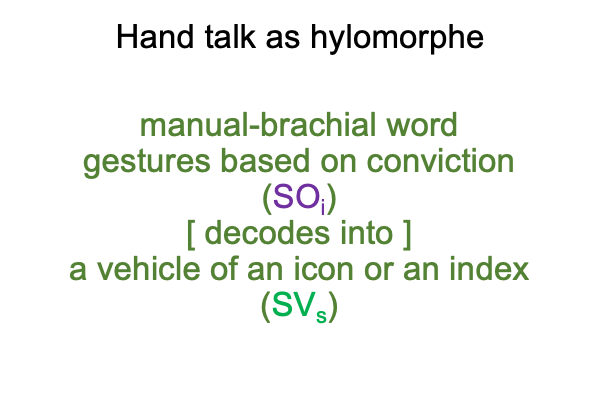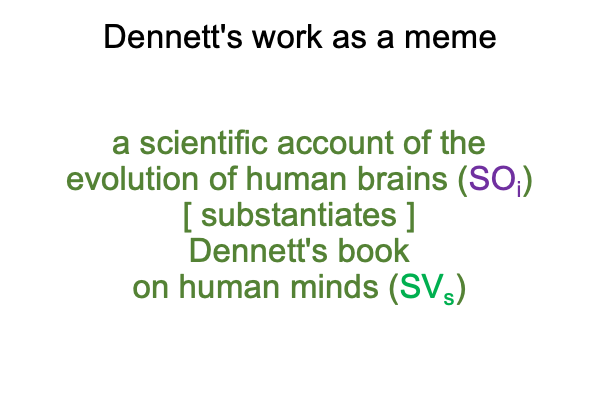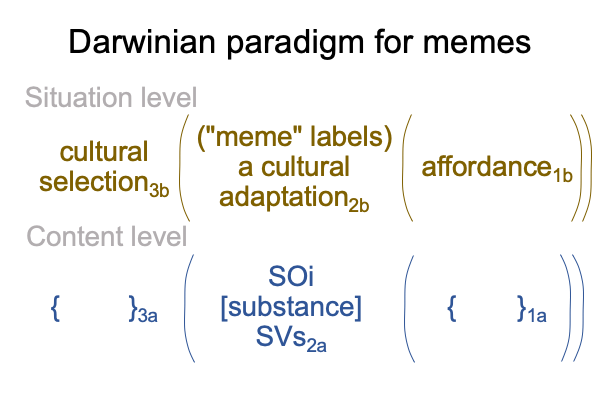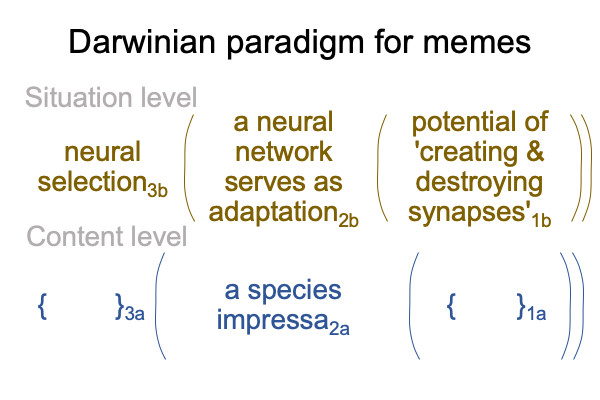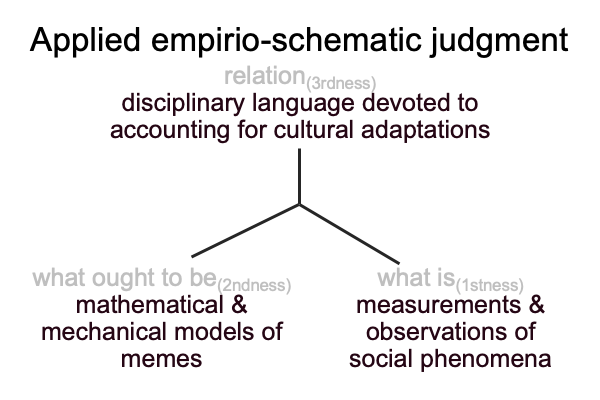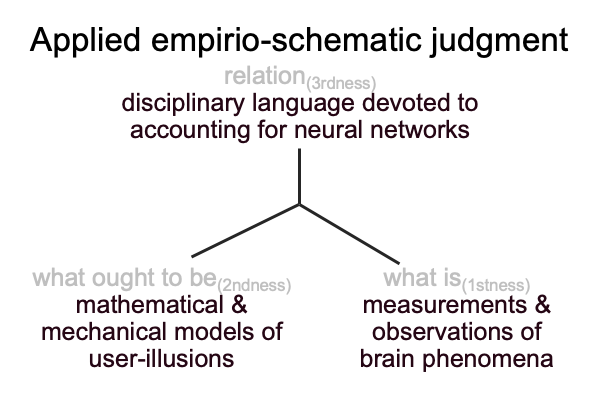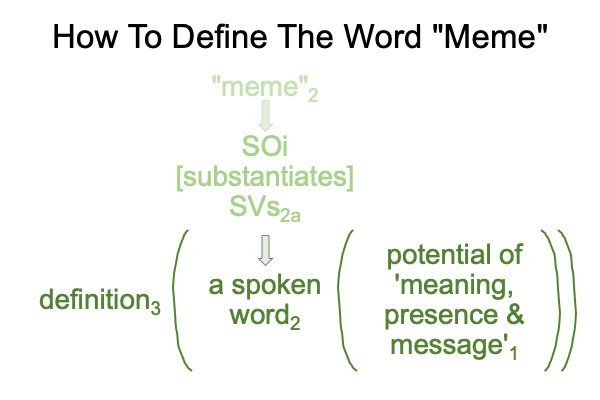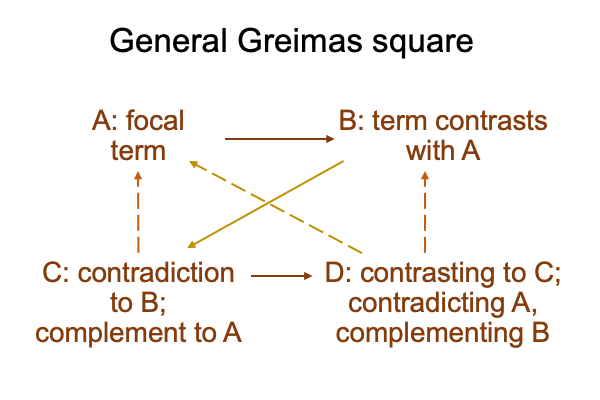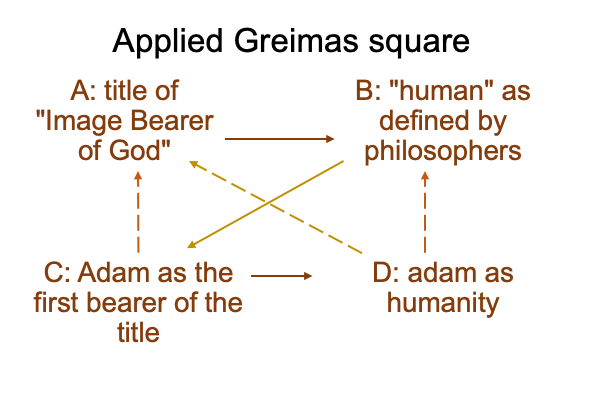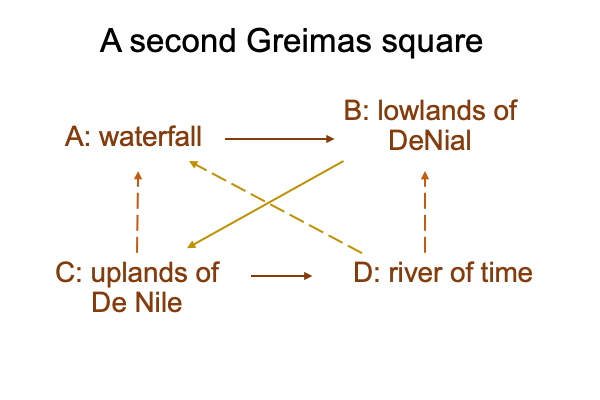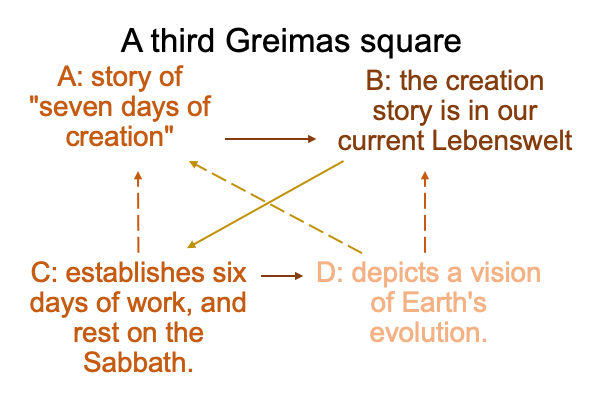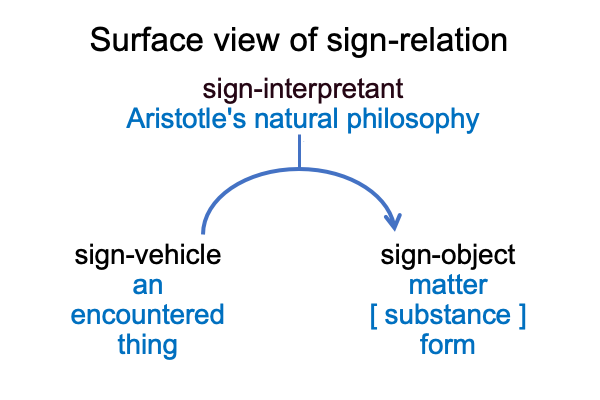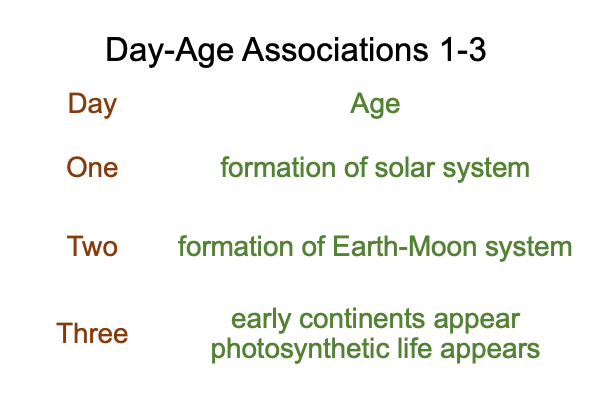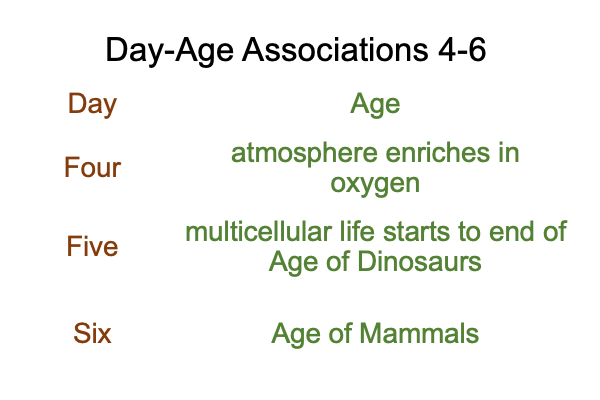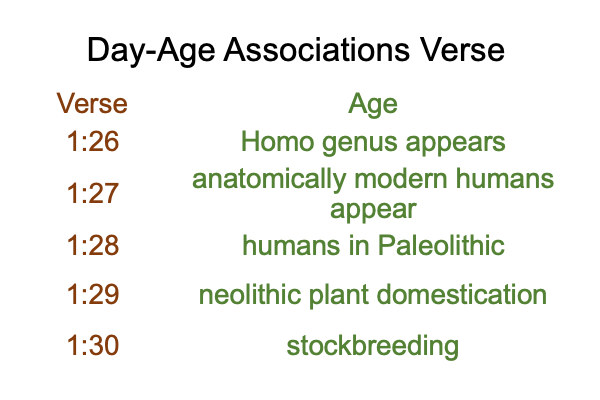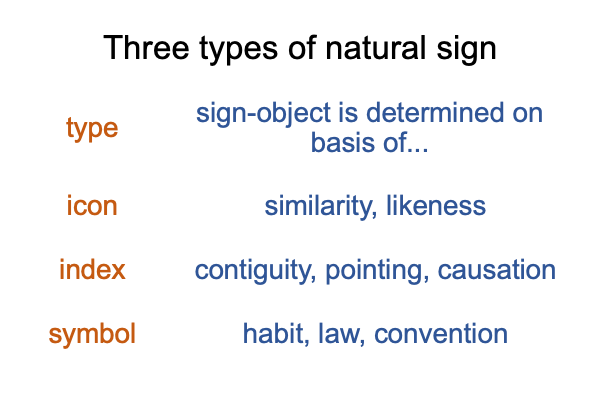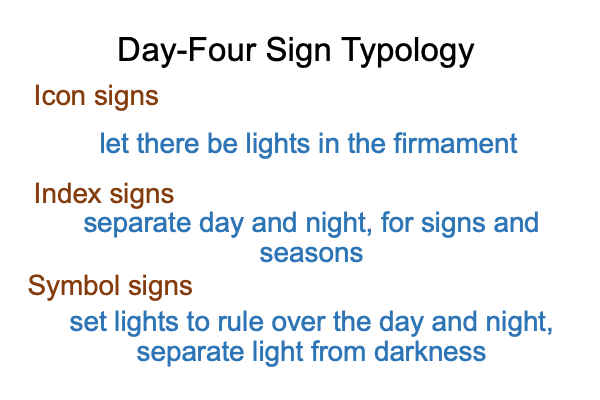What Is A Meme? (G of G, Part 15 of 20)
0137 From the previous blogs, I know that the meme is bound to the species impressa2a.
In the species impressa2a, the sign-object of the interventional sign (SOi) weds the sign-vehicle of the specifying sign(SVs).

The question arises, “How are the two united?”
0138 Aristotle’s hylomorphe meets the definition of Peirce’s category of secondness. The category of secondness consists of two contiguous real elements. My nomenclature puts the contiguity into brackets: one real element [contiguity] other real element.
0139 The two real elements are subject to the law of noncontradiction.
Plus, the contiguity is not a real element, even though it seems to be.
Ironically, I intend to use the word, “substance”, to label the contiguity. The word has a long pedigree. After being used for philosophical discourse for thousands of years, the word does not have much use in our current modern Age of Ideas. Some people call table salt, “a substance”. Some moderns call addiction to cocaine, “substance abuse”. So, my technical postmodern adoption of the term, “substance”, as the contiguity between matter and form, marks a turning point, the dawn of a new age of understanding.
More or less.
The hylomorphe stands at the beginning of the Greek Age of philosophy.
0140 Here is a picture of Aristotle’s hylomorphe.

0141 For this application, the meme is a species impressa2a manifesting the following hylomorphic structure.

0142 Dennett devotes several chapters to memes, including chapter ten (“The Meme’s Eye Point of View”) and eleven (“What Wrong with Memes? Objections and Replies”).
0143 This picture of the meme satisfies Dennett’s concept of the meme.
How so?
Memes are units of cultural information. Memes allow competence without comprehension. At the same time, memes play a role in comprehension.
0144 Of course, this picture also challenges Dennett’s notion of the meme.
How so?
The meme is a hylomorphe constructed with sign-elements of two sign-relations.
This brings me back to competence, as opposed to comprehension.
Competence merely requires both signs to function.
Comprehension depends on how apparent the interventional sign is. How well does the interventional sign-action2a(SOi), which like inversion of what we imagine a sign-object to be, convey what is happening3a and the potential of ‘something happening’1a (SIi)?
After all, comprehension implies that a person registers what is happening3a and the potential of ‘something’ happening1a(SIi), while decoding an ongoing event2a (SOi).
0145 This raises a related issue, asking “What is the proper metaphor for memes?”
According to Dennett (following Richard Dawkins, who originally promotes the idea that memes are phenomena subject to scientific inquiry), memes are like viruses. Each meme pursues own reproductive fitness. So, a cultural unit may have traits that exist simply because they are advantageous to its replication. Yet, the host must matter, because the host carries the meme, just like host carries a virus.
This makes me wonder.
Are viruses the most appropriate analogy for memes?
Or are synapses?
Virus do not form connections. Synapses do. The meme as hylomorphe connects the sign-object of an interventional sign(SOi) with the sign-vehicle of a specifying sign (SVs).
0146 A Darwinian paradigm where memes are like viruses leads to different predictions than one where memes are like synapses.
Take a glance at the following figure where a meme is a hylomorphe and ask, “Does this figure look more like one neuron [cultivating] a synapse to another neuron or a virus [infecting] a host?“

Okay, that was a rhetorical question.
0147 If memes are hylomorphic entities, then other characteristics of memes become obvious. Memes offer competence without comprehension. Memes are informational beings. They survive because they encourage the evolution of neural networks. Plus, they offer affordances. Neurons make their living by trafficking in information. Information consists in opportunities to form relevant synapses and to cost-cut synapses that are no longer busy.
Here is a picture of Dennett’s characteristics of memes.

0148 The three characteristics of memes highlight the fragility of modern theories that account for cultural phenomenawith poorly-defined labels, such as “beliefs” or “ideas”. Modern social theorists cannot account for why beliefs or ideas arise in the first place and how they are replicated among individuals. Meme theorists can.
0149 So, what do social scientists say in response?
Do I hear laughter echoing down the hallways of the College of Social Science?
Or is it it the Colleges of Social Sciences?
0150 In chapter eleven, Dennett defends the meme research project against detractors, who tend to be modern social scientists. Some of these professionals employ the paradigm of natural history to explain human adaptations. Some of them ignore human evolution altogether.
0151 Once again, here is the Darwinian paradigm, beloved by natural historians.

In the normal context of natural selection3b, an adaptation2b emerges from (and situates) a niche1b, which is the potential1b of an actuality independent of the adapting species2a. The biologist considers an adaptation2b, as a situation-level actuality, with the goal of first, identifying the actuality independent of the adapting species2a and second, delineating the specific potential that is either exploited or avoided1b.
0152 Now, replace the natural-historical terms with versions that derive from Dennett’s meme project.
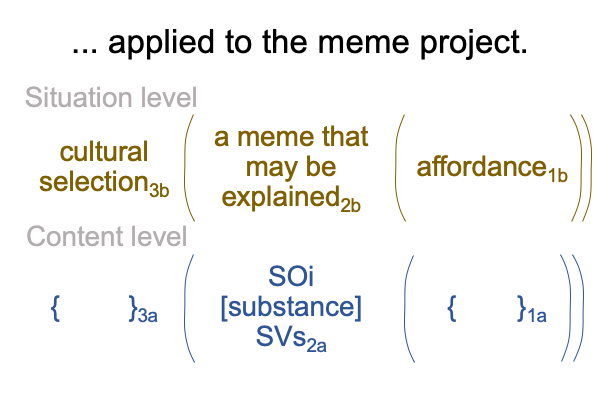
In the normal context of cultural selection3b, an explanation for a meme2b emerges from (and situates) an affordance1b,which manifests the potential1b of the hylomorphic structure of the species impressa2a, as pictured above.
0153 What does this imply?
The social scientist should consider the meme as an adaptation2b, as a situation-level actuality, with the goal of first, identifying the content-level actuality2a where a sign-object of the interventional sign-relation substantiates the sign-vehicle of a specifying sign-relation2a and second, delineating the specific affordance that is either exploited or avoided1b.
0156 Clearly, the modern anthropologist faces a more complicated and confusing task than the natural historian, because the meme2a is embedded in the scholastic interscope depicting the way humans think.


